COMET IMAGE GALLERY (comets 1-400)
page 5
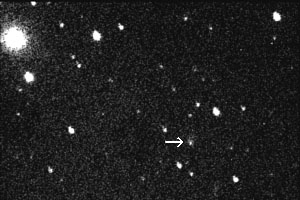
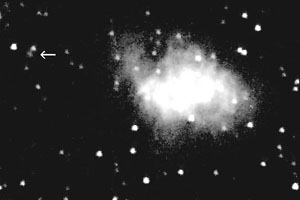
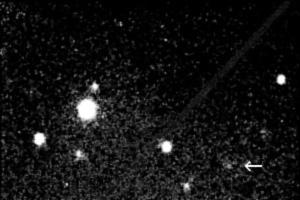
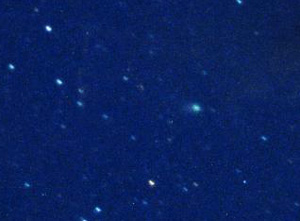
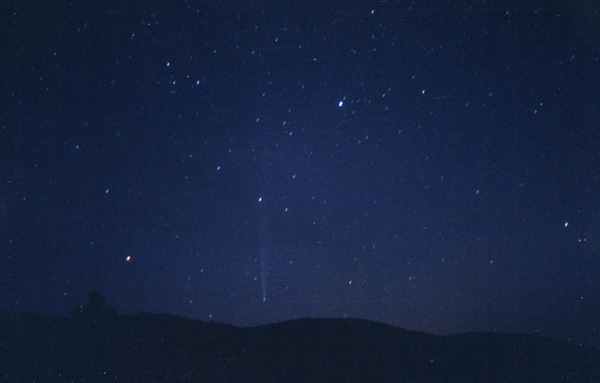
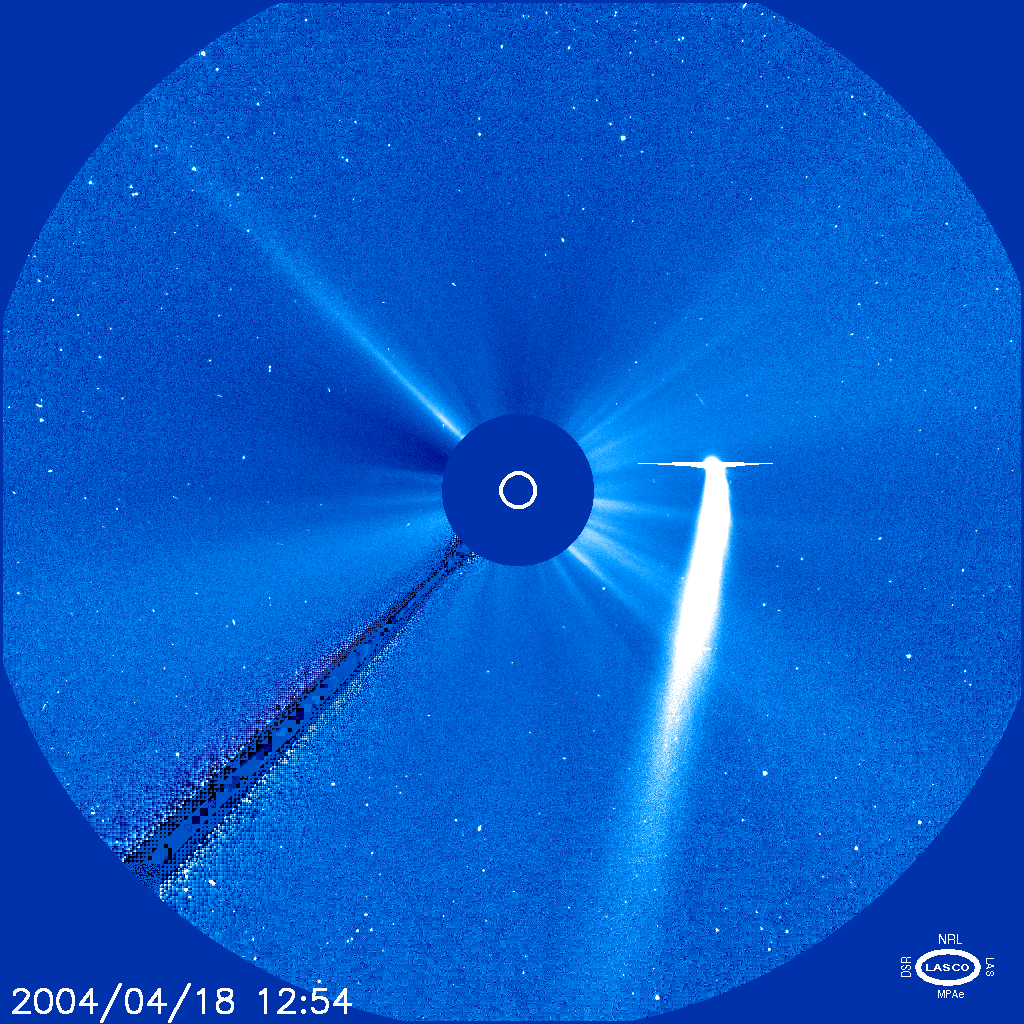
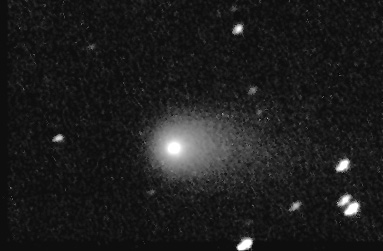
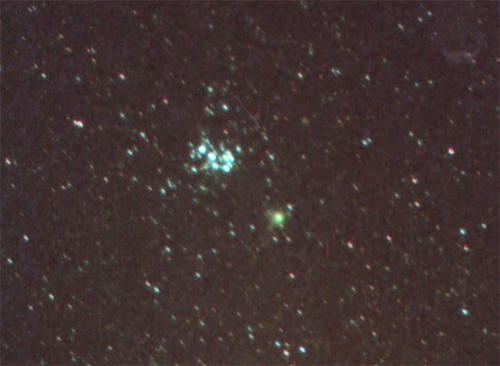
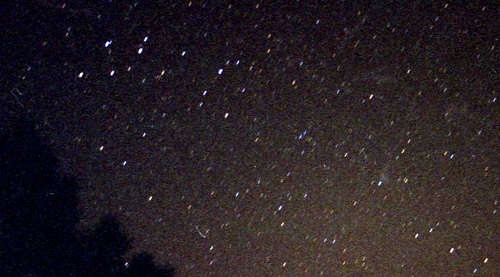
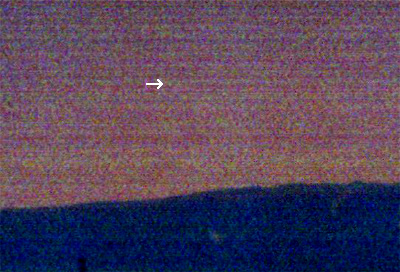
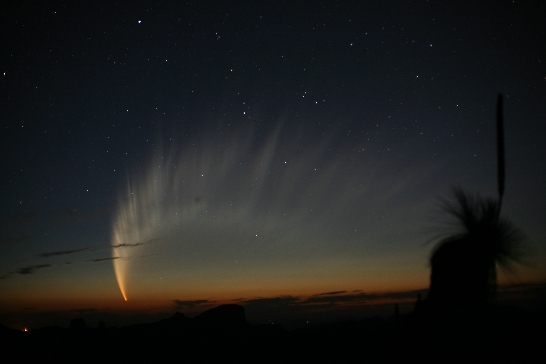
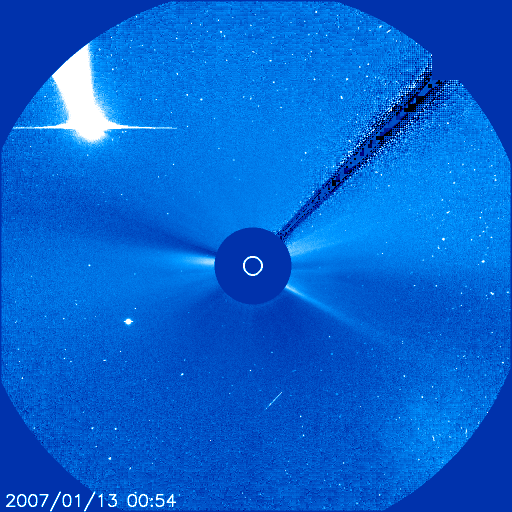
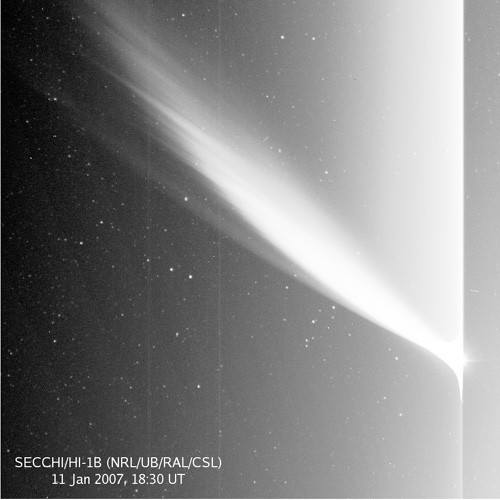

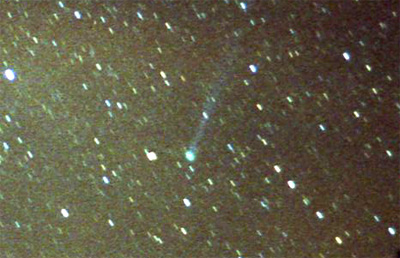
|
COMET IMAGE GALLERY (comets 1-400)
page 5 |
|||||||||||||||||||||||||||||||||
 |
|||||||||||||||||||||||||||||||||
 |
|||||||||||||||||||||||||||||||||
| Comet 81P/Wild 2 (no. 332). This is the comet which the Stardust probe encountered in January 2004, and returned samples to Earth two years later. I observed this comet during its discovery return in 1978 and during every return since then, and should see it again during the next 100 comets. Left: CCD image taken on December 5, 2002 (over three months before I picked it up visually). Right: CCD image taken the evening of April 28, 2003, when the comet was passing by the Crab Nebula in Taurus. The comet was very low in the sky, and this was one of the last images taken before it disappeared into conjunction with the sun. The positional measurements from this image were used by the Stardust project for spacecraft navigational purposes, and for a time this image was featured on the Stardust web site. | |||||||||||||||||||||||||||||||||
 |
|||||||||||||||||||||||||||||||||
 |
|||||||||||||||||||||||||||||||||
| Comet NEAT C/2001 Q4 (no. 339). This was one of three comets that were visible to the unaided eye during the spring of 2004; this particular object was unusual in that it was discovered in August 2001, over 2 1/2 years from perihelion, and located beyond the orbit of Saturn. While it was not quite the "Great" comet that some of us had hoped for, it was nevertheless an easy naked-eye object when nearest the sun and Earth. Left: CCD image taken on August 12, 2002, almost a full year before I picked it up visually. Right: photograph taken May 5, 2004. | |||||||||||||||||||||||||||||||||
 |
|||||||||||||||||||||||||||||||||
 |
|||||||||||||||||||||||||||||||||
| Comet Bradfield C/2004 F4 (no. 350). One of the other two naked-eye comets of the spring of 2004. Above: photograph taken morning of April 26, 2004. Right: LASCO C3 coronagraph image taken on April 18, 2004, shortly after the comet had passed perihelion. (The horizontal "spike" through the comet's head is an image artifact caused by the comet's high brightness.) Image courtesy NASA/ESA. | |||||||||||||||||||||||||||||||||
 |
 |
||||||||||||||||||||||||||||||||
| Comet Machholz C/2004 Q2 (no. 355). A moderately bright naked-eye comet that appeared during the winter of 2004-05. Above: CCD image taken September 23, 2004. Right: photograph taken January 7, 2005, when the comet was near the Pleiades star cluster in Taurus. | |||||||||||||||||||||||||||||||||
 |
|||||||||||||||||||||||||||||||||
| Comet Pojmanski C/2006 A1 (no. 387). Photograph taken March 5, 2006 from the Earthrise dark-sky site. The constellation Delphinus is at the upper left, and the comet (with a long, faint tail extending to the upper right) is in the lower right. | |||||||||||||||||||||||||||||||||
 |
|||||||||||||||||||||||||||||||||
 |
|||||||||||||||||||||||||||||||||
| Comet McNaught C/2006 P1 (no. 395). This is the brightest comet I have seen during all my years of comet observing, reaching at least magnitude -4, and which I was able to observe during broad daylight for three days in mid-January 2007. Unfortunately, for the northern hemisphere, and especially for my latitude of +33 degrees, extremely poor viewing geometry made it a difficult object for "nighttime" viewing, and problematical weather conditions at my location at the time conspired to make it an even more elusive object. Left: The only photograph I was able to take of the comet, a few minutes after sunset on January 12, 2007 from east of Dunken, New Mexico (the comet's being only 6.5 degrees from the sun at the time). This was a short exposure taken in bright twilight, and has been processed at very high contrast to bring out the comet. Within five minutes the clouds below the comet had billowed up and covered it up, and I was unable to attempt any more photographs. Right: What we northerners missed. After perihelion the comet traveled southward and became a spectacular sight as seen from the southern hemisphere. This photograph was taken by the comet's discoverer, Rob McNaught, from Siding Spring Observatory in New South Wales on January 19, 2007. This is one of many photographs that can be found on his comet page. Photograph used with permission. | |||||||||||||||||||||||||||||||||
 |
 |
||||||||||||||||||||||||||||||||
| Comet McNaught from space. Left: LASCO C3 coronagraph aboard SOHO, on January 13, 2007 (only half an hour after my above photograph). The bright object below the comet and to the lower left of the sun is Mercury. Right: The Heliospheric Imager aboard the recently-launched STEREO-B spacecraft on January 11, 2007. Images courtesy NASA and ESA. | |||||||||||||||||||||||||||||||||
 |
 |
||||||||||||||||||||||||||||||||
| Comet SWAN C/2006 M4 (no. 396), which had an outburst to about magnitude 4 1/2 in late October 2006. Left: Photograph taken evening of October 26, 2006, from the Earthrise dark-sky site. Right: Close-up of the same photograph. | |||||||||||||||||||||||||||||||||
| Previous 1 2 3 4 5 | |||||||||||||||||||||||||||||||||
| Return to main comets page | |||||||||||||||||||||||||||||||||